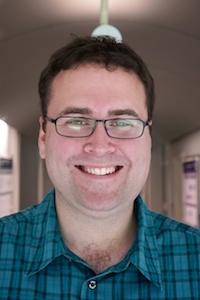


Chemical synthesis is largely performed in a closed, in-equilibrium environment, and only a few reactions such as the classical Belousov-Zhabotinsky oscillator rely on far-from-thermodynamic- equilibrium reaction conditions. In nature, it is exactly the far-from-equilibrium state of chemical reactions that keeps cells alive and a wide range of their functions is based on spatiotemporal control of concentrations through sophisticated systems in which reaction and diffusion (RD) are coupled. To systematically study diffusion processes, reaction kinetics and gain insights in cellular composition and organization that facilitate transport and communication through energy-efficient coupled RD systems, a living cell is an inconvenient environment, as concentration and local composition in the far-from-equilibrium system are in permanent flux. In addition, cells are not "empty". The concentration of macromolecules is approximately 200-400 mg mL-1, and it is expected that chemistry and physics behave differently when moving from a diluted state, in which chemists usually work, to a dense, crowded state. However, the macromolecular concentration in conventional biochemical assays is generally much lower than in living cells, and results have thus to be extrapolated to the situation in vivo. Moreover, the range of experimental conditions under which reaction rates and diffusion processes can be studied is limited by the cell's. This emphasizes the need for an experimental platform that rebuilds a representative physicochemical environment in which cellular mass transport and signal transduction can be rationally studied and new insights gained in the way life functions on a cellular and subcellular basis.



Chemical synthesis is largely performed in a closed, in-equilibrium environment, and only a few reactions such as the classical Belousov-Zhabotinsky oscillator rely on far-from-thermodynamic- equilibrium reaction conditions. In nature, it is exactly the far-from-equilibrium state of chemical reactions that keeps cells alive and a wide range of their functions is based on spatiotemporal control of concentrations through sophisticated systems in which reaction and diffusion (RD) are coupled. To systematically study diffusion processes, reaction kinetics and gain insights in cellular composition and organization that facilitate transport and communication through energy-efficient coupled RD systems, a living cell is an inconvenient environment, as concentration and local composition in the far-from-equilibrium system are in permanent flux. In addition, cells are not "empty". The concentration of macromolecules is approximately 200-400 mg mL-1, and it is expected that chemistry and physics behave differently when moving from a diluted state, in which chemists usually work, to a dense, crowded state. However, the macromolecular concentration in conventional biochemical assays is generally much lower than in living cells, and results have thus to be extrapolated to the situation in vivo. Moreover, the range of experimental conditions under which reaction rates and diffusion processes can be studied is limited by the cell's. This emphasizes the need for an experimental platform that rebuilds a representative physicochemical environment in which cellular mass transport and signal transduction can be rationally studied and new insights gained in the way life functions on a cellular and subcellular basis.